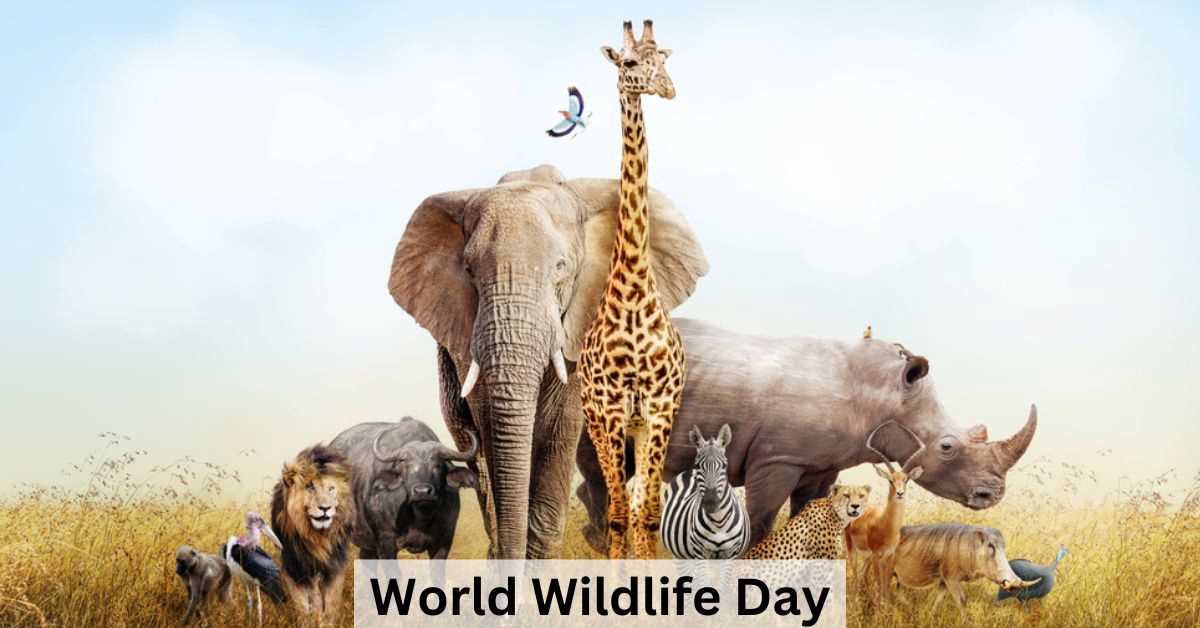
Every year on March 3rd, the world comes together to celebrate World Wildlife Day. This day, established by the United Nations General Assembly, serves as a global platform to raise awareness about the world’s wild animals and plants and the urgent need for their conservation.
Wildlife faces numerous threats, including habitat loss, poaching, and the illegal wildlife trade. These threats not only endanger the survival of countless species, but also disrupt ecosystems and impact human well-being. World Wildlife Day serves as a crucial reminder of these challenges and emphasises the need for collective action.
Today, we celebrate World Wildlife Day to recognize the unique contributions of wildlife to people and the planet.
Let’s pledge to protect, preserve & provide for wildlife and their habitats through conservation & sustainable development. pic.twitter.com/lGHn8n2u6X
The World Wildlife Day is a day to recognise the coherent bond between humans and the wildlife, a prerequisite for a balanced ecosystem.
Assam is blessed in abundance of wildlife, which enhances the charm of our beautiful State.#WWD2024 pic.twitter.com/14DoC8sOBR
What is the History of World Wildlife Day?
The history of World Wildlife Day is closely linked to the Convention on International Trade in Endangered Species of Wild Fauna and Flora (CITES), a crucial agreement aimed at regulating international trade to prevent the overexploitation of wild animals and plants.
Here’s a timeline of key events:
1973:
- CITES is adopted on March 3rd, marking a significant step towards international cooperation in wildlife conservation.
2013:
- The 16th meeting of the Conference of the Parties to CITES (CoP16) designates March 3rd as World Wildlife Day.
- Later that year, on December 20th, the United Nations General Assembly officially proclaims March 3rd as World Wildlife Day
The UN mentions: “On 20 December 2013, the Sixty-eighth session of the United Nations General Assembly decided to proclaim 3 March as World Wildlife Day to celebrate and raise awareness of the world’s wild fauna and flora. The date is the day of the adoption of the Convention on International Trade in Endangered Species of Wild Fauna and Flora (CITES) in 1973, which plays an important role in ensuring that international trade does not threaten the species’ survival.”
“Previously, 3 March had been designated as World Wildlife Day in a resolution made at the 16th meeting of the Conference of the Parties to CITES (CoP16) held in Bangkok from 3 to 14 March 2013. The CITES resolution was sponsored by the Kingdom of Thailand, the Host of CITES CoP16, which transmitted the outcomes of CITES CoP16 to the UN General Assembly,” it adds.
What is the Significance of World Wildlife Day?
World Wildlife Day holds several significant values:
- Raising Awareness: It serves as a crucial platform to educate and inform the public about the incredible diversity of wild animals and plants on our planet. This increased awareness fosters a deeper appreciation for the intrinsic value of wildlife and its role in maintaining healthy ecosystems.
- Highlighting Threats: The day acts as a stark reminder of the various threats wild species face, including habitat loss, poaching, and illegal wildlife trade. These threats not only endanger individual animals and plants but also disrupt the delicate balance of ecosystems, impacting human well-being as well.
- Promoting Conservation: World Wildlife Day serves as a call to action for individuals, governments, and organisations to actively participate in wildlife conservation efforts. This can involve supporting conservation organisations, making responsible consumer choices, and advocating for policies that protect wildlife and their habitats.
- Celebrating Success: The day also allows us to celebrate the successes achieved in wildlife conservation and acknowledge the dedication of individuals and organisations working tirelessly to protect endangered species and their habitats. These celebrations inspire continued efforts and offer hope for the future of wildlife.
- Global Collaboration: By being a globally recognised event, World Wildlife Day encourages international cooperation in tackling the challenges of wildlife conservation. This collaboration is crucial for addressing issues like illegal wildlife trade, which often transcend national borders.
What is the Theme of World Wildlife Day 2024?
The theme for World Wildlife Day 2024 is “Connecting People and Planet: Exploring Digital Innovation in Wildlife Conservation.” This theme highlights the potential of digital technologies to support and enhance wildlife conservation efforts in various ways.
List of 5 Largest Animal Sanctuaries in the World 2024
Here are five of the largest protected areas in the world that significantly contribute to wildlife conservation:
Natural Park of the Coral Sea, New Caledonia: Spanning over 500,000 square miles, this marine park established in 2014 is the largest in the world. It encompasses the entire French territory of New Caledonia, including the world’s second-longest double barrier reef and diverse marine life, including dugongs, sharks, sea turtles, and nesting birds.
Kavango-Zambezi Transfrontier Conservation Area (KAZA TFCA), Southern Africa: Established in 2011, this massive conservation area, encompassing over 200,000 square miles across five countries (Angola, Botswana, Namibia, Zambia, and Zimbabwe), is the largest transfrontier conservation area in the world. KAZA TFCA is home to Africa’s largest elephant population alongside other diverse wildlife like cheetahs, hippos, and over 600 bird species.
Northeast Greenland National Park, Greenland: This park, established in 1974 and expanded in 2008, boasts the title of the largest national park on Earth, covering over 865,000 square miles. It protects the world’s largest population of musk oxen, walruses, and polar bears, along with unique Arctic ecosystems.
Pacific Remote Islands Marine National Monument, United States: Established in 2009, this vast marine protected area encompassing over 490,000 square miles, is the largest in the world. It safeguards diverse marine life in the central Pacific Ocean, including endangered species like sea turtles, whales, and coral reefs.
Papahānaumokuākea Marine National Monument, United States: Established in 2006, this marine monument spanning over 136,000 square miles protects the Northwestern Hawaiian Islands and their surrounding waters. It harbors a unique ecosystem with diverse marine life, including whales, dolphins, monk seals, and over 7,000 marine species.
